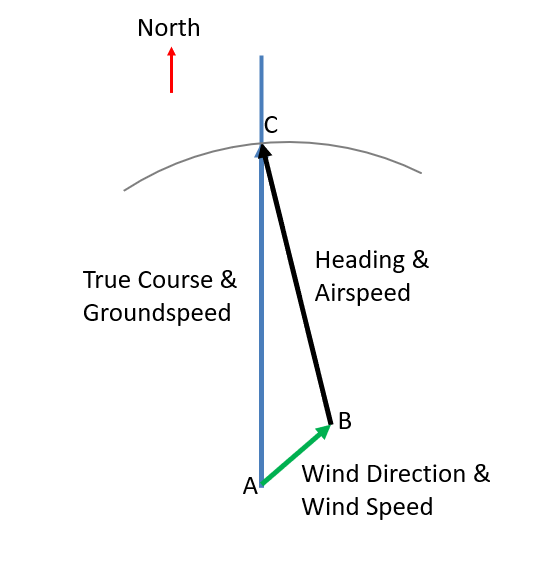SL Helicopter Flying Handbook/Navigation
SECTION 11. Navigation
Contents
1 Introduction
Air navigation is the process of piloting an airport from one location to a desired location without getting lost, violating airspace restrictions, or endangering the safety of those in the aircraft or on the ground. The specific methods use for navigation depend on many factors including the pilot's experience and familiarity with the route, and the types of navigation equipment available in the aircraft. Methods can include pilotage (navigation by reference to landmarks), dead reckoning (calculating a course based on compass headings and wind conditions), GPS-based navigation, and VOR-based navigation. In addition, some aircraft may be equipped with an autopilot that may or may not interface with the navigation equipment. It is the responsibility of the pilot to become familiar with the equipment available in the aircraft they are operating.
1.1 Pilotage and Dead Reckoning
1.1.1 Pilotage
Pilotage is the process of navigating by reference to fixed points on the ground, often in conjunction with an aeronautical chart or map, or by using the chart to plan the route. It is often the simplest form of navigation and often the first one that a pilot will learn. In SL, pilotage can include flight by reference to specific region names. For example, to fly from White Star Airport (SLWS) to Hollywood (SLHA), one might use the following route:
- Depart SLWS Eastbound
- Turn right to South at Oobilon
- Turn left to East at Blake Sea - Swab
- Turn left to North at Blake Sea - China
- Land at Hollywood
1.1.2 Dead Reckoning
Dead reckoning, in the context of air navigation, is the process of calculating heading, speed and time to travel between fixed points given vehicle speed and wind conditions. While manual dead reckoning is not a common technique for SL navigation, it is useful for pilots to understand the basics, in particular when flying an aircraft with simulated wind.
Dead reckoning problems typically revolve around the wind triangle (Figure 1). The wind triangle shows the relationship among the aircraft heading/airspeed, wind direction/speed, and true course/groundspeed. The actual path that a pilot takes
In the most common case, the pilot knows the desired ground track, the wind speed and direction, and the aircrafts airspeed. From this, the pilot would like to know the aircraft heading needed to follow that ground track, and the resulting windspeed.
